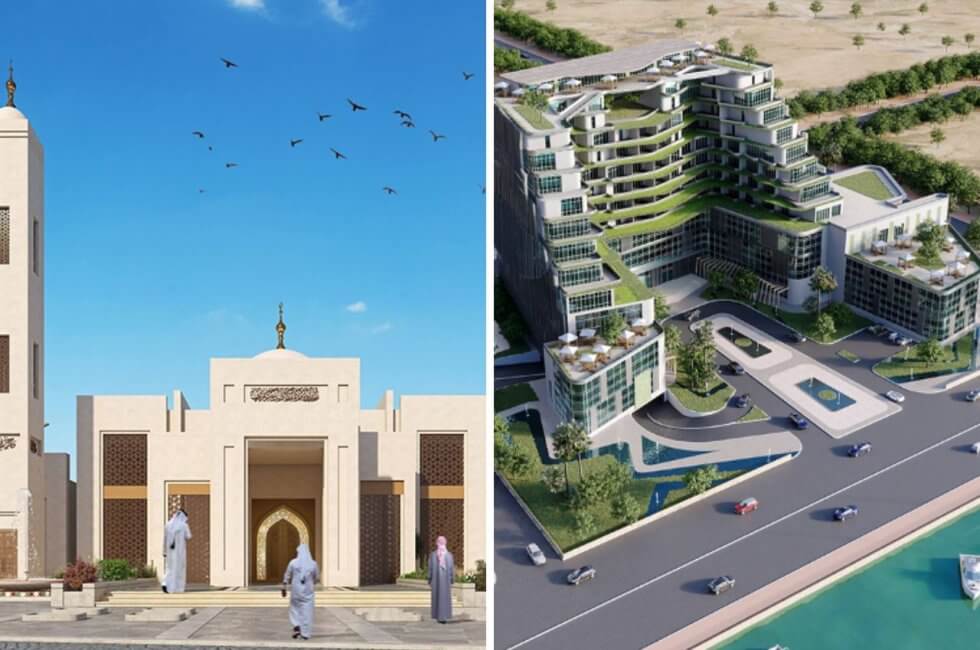Offline Rendering:
Offline rendering refers to the traditional method of generating images or animations by computing every pixel in a scene before displaying the final result. This method involves pre-rendering frames or images using powerful computers, typically utilizing software like Autodesk 3ds Max, V-Ray, or Blender Cycles.Here are the pros and cons associated with offline rendering in architectural visualization:
Pros:
High-Quality Output: Offline rendering allows for the highest level of detail and realism due to the extensive computation time available. This results in photorealistic images that accurately represent the architect's vision.Advanced Lighting and Shading: With offline rendering, intricate lighting setups and complex shader materials can be meticulously crafted to achieve precise ambiance and mood in architectural scenes. This level of control is essential for conveying specific design intentions.
Post-Processing Flexibility: Since each frame is computed independently, offline rendering enables extensive post-processing options. Architects can fine-tune colors, contrast, and apply various effects to achieve the desired aesthetic.
Global Illumination: Offline rendering algorithms often incorporate sophisticated global illumination techniques such as radiosity and photon mapping, resulting in realistic light interactions within the scene, including indirect lighting and soft shadows.
Cons:
Time-Consuming Process: Perhaps the most significant drawback of offline rendering is the time it takes to produce high-quality images or animations. Complex scenes may require hours, days, or even weeks to render, limiting the iteration speed and overall project turnaround time.Resource Intensive: Offline rendering demands substantial computational resources, including powerful CPUs, ample RAM, and sometimes specialized hardware like GPU render farms. This can significantly increase project costs, especially for large-scale architectural visualizations.
Limited Interactivity: Since offline rendering involves pre-computing frames, there is minimal interactivity during the rendering process. Any adjustments to the scene or camera angles necessitate re-rendering, leading to a slow iterative workflow.
Real-Time Rendering:
Real-time rendering, on the other hand, focuses on rendering images or animations in near-instantaneous time, allowing for interactive manipulation of the scene. This approach is commonly employed in video games and interactive applications but is increasingly gaining traction in architectural visualization.Learn more about real-time rendering and why it is important.
Here are the pros and cons of real-time rendering in this context:
Pros:
Interactive Feedback: Real-time rendering provides immediate visual feedback as changes are made to the scene, allowing architects to quickly iterate on designs. This fosters a more collaborative and responsive workflow, facilitating better communication between stakeholders.Efficient Iteration: With real-time rendering, architects can experiment with different lighting conditions, materials, and compositions in real-time, speeding up the design iteration process. This agility is particularly beneficial during client presentations and design reviews.
Cost-Effectiveness: Real-time rendering requires less computational resources compared to offline rendering since it doesn't rely on extensive pre-computation. This can lead to cost savings, especially for small to medium-sized architectural firms with limited budgets.
Virtual Reality (VR) Integration: Real-time rendering seamlessly integrates with VR technology, enabling architects to create immersive experiences where clients can explore architectural designs in a virtual environment. This enhances visualization and aids in decision-making processes.
Cons:
Limited Photorealism: While real-time rendering techniques continue to improve, they often sacrifice some level of photorealism compared to offline rendering. Achieving the same level of detail and fidelity may require advanced optimization techniques and compromises in real-time performance.Hardware Dependency: Real-time rendering performance heavily relies on the capabilities of the hardware, particularly the GPU. Achieving smooth frame rates and visual quality may necessitate high-end graphics cards, which can be a barrier for some users.
Complexity of Implementation: Implementing real-time rendering solutions for architectural visualization can be complex, requiring expertise in graphics programming and optimization techniques. Additionally, integrating real-time rendering into existing workflows may require significant adjustments and learning curves. Also, checkout the current trends in architectural 3D rendering.
Conclusion:
In conclusion, both offline and real-time rendering approaches offer unique advantages and face distinct challenges in the context of architectural visualization. Offline rendering excels in producing high-quality, photorealistic imagery with advanced lighting and shading effects but is hampered by long rendering times and high computational requirements. On the other hand, real-time rendering provides interactive feedback, efficient iteration, and cost-effectiveness, albeit with some compromises in photorealism and hardware dependencies.Ultimately, the choice between these two methods depends on project requirements, client expectations, budget constraints, and the desired balance between visual fidelity and workflow efficiency. As technology continues to evolve, the line between offline and real-time rendering blurs, offering architects increasingly sophisticated tools to visualize and communicate their designs.
ArchXStudio leverages real-time rendering to provide architects with immediate visual feedback and interactive exploration of their designs. By utilizing advanced rendering technology, ArchXstudio enables architects to make rapid iterations, experiment with different lighting scenarios, and create immersive experiences for clients, ultimately streamlining the architectural visualization process.

